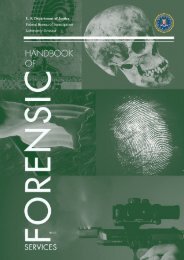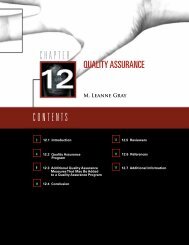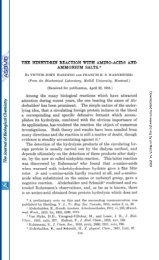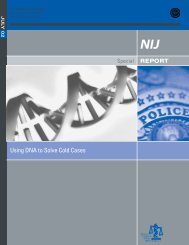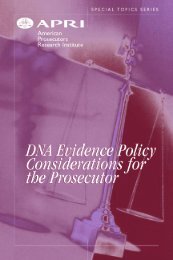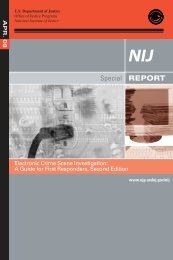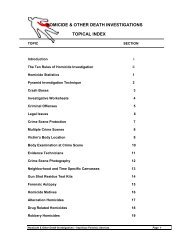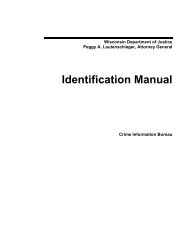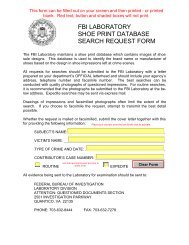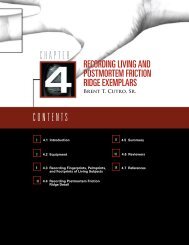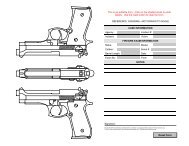Mass Fatality Incidents: A Guide for Forensic Identification
Mass Fatality Incidents: A Guide for Forensic Identification
Mass Fatality Incidents: A Guide for Forensic Identification
- No tags were found...
You also want an ePaper? Increase the reach of your titles
YUMPU automatically turns print PDFs into web optimized ePapers that Google loves.
MASS FATALITY INCIDENTS: A GUIDE FOR HUMAN FORENSIC IDENTIFICATION5. Preferred samples. Human remainssources include:a. Blood.b. Soft tissue:1) Deep red skeletal muscle.2) Organ tissue.3) Skin.c. Hard tissue:1) Bones.2) Teeth. 6. Sample handling:a. Tell staff members responsible<strong>for</strong> collecting DNA samples <strong>for</strong>analysis to take proper precautionsto minimize the risk ofcontamination.b. Handle samples in a manner thatprevents loss or deleteriouschange:1) Use sterile and disposablesupplies <strong>for</strong> sample collectionwhenever possible.2) Discard or clean gloves andcutting instruments after takingeach sample.3) Clean instruments, work surfaces,gloves, or other itemswith commercial bleach (onepart bleach to nine partswater).B. Family references:1. Collection:a. Initiate the collection of referencesamples from members ofthe victims’ immediate familiesat the family assistance center(FAC) or other designated sites.b. Develop and implement a plan toinitiate the remote collection ofreference samples from familymembers. Use other agencies toassist as necessary.c. Place and appropriately storeindividual reference samples inseparately labeled containers.2. Documentation:a. Obtain and document in<strong>for</strong>medconsent using consent <strong>for</strong>msthat have undergone legalreview:1) Include the purpose <strong>for</strong>requesting the sample.2) Describe the intended use ofthe sample, restrictions on itsuse, and the confidentiality ofthe DNA results.b. Identify the donor:1) Confirm the donor’s credentials.2) Clearly establish the donor’sbiological relationship to thevictim.3) Obtain the donor’s contactin<strong>for</strong>mation.4) Use an appropriate <strong>for</strong>m (seeappendix E <strong>for</strong> DNA samplefamily reference collection<strong>for</strong>ms).c. Originate and maintain a chainof custody <strong>for</strong> donor referencesamples.d. Initiate a logical numbering system<strong>for</strong> all reference samplesthat is compatible with the IMS/ICS (e.g., consider allocating apredetermined block of numbersto assist in identifying the sourceof the sample).3. Staff:a. Identify and utilize appropriateindividuals or agencies <strong>for</strong> thecollection of family referencesamples.27




